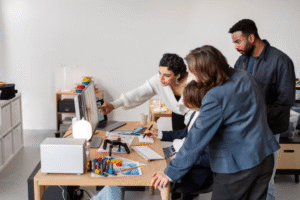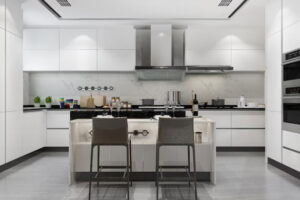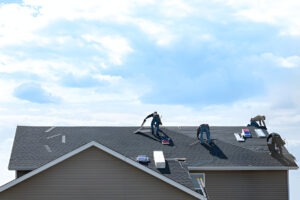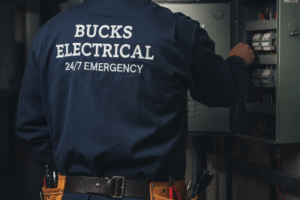In the ever-evolving architectural landscape of Dubai, tradition and modernity often meet in breathtaking ways. From the city’s futuristic skyline to the intricate details of its cultural designs, Dubai continues to set global standards for architectural innovation. Among the most fascinating examples of this fusion is the revival of the Mashrabiya—an iconic element deeply rooted in Emirati heritage—reimagined today through advanced metal craftsmanship. Modern fabrication technologies have allowed artisans and architects to preserve the spirit of tradition while adapting it to the needs of contemporary structures.
The Mashrabiya, historically a wooden lattice screen, was once an integral feature in Middle Eastern homes, offering privacy, ventilation, and shade. Today, Dubai’s designers and builders have transformed this traditional element into a symbol of cultural continuity and modern engineering. By merging cutting-edge fabrication techniques with the region’s architectural legacy, they have created something extraordinary: the Steel Mashrabiya, a modern interpretation that retains its original purpose while meeting modern aesthetic and environmental standards. This evolution beautifully reflects how Dubai harmonizes its rich heritage with its identity as a forward-looking metropolis.
The Historical and Cultural Essence of Mashrabiya
The origins of the Mashrabiya date back centuries, where wooden latticed screens adorned the windows and balconies of homes across the Arab world. These structures allowed families to observe life outside without being seen, maintaining cultural norms of privacy. Beyond function, the Mashrabiya carried deep artistic and spiritual value, with each geometric pattern symbolizing balance and harmony.
In Emirati culture, Mashrabiya became a symbol of identity, craftsmanship, and architectural intelligence. Its unique ability to provide natural ventilation and light control made it a staple design in desert climates, where managing sunlight and airflow was crucial for comfort. The wooden screens also enhanced social interaction within homes by dividing spaces while allowing a sense of connection. In many ways, Mashrabiya represented both artistry and practicality—an architectural embodiment of balance between aesthetic elegance and environmental mindfulness.
The Evolution into Modern Steel Mashrabiya
As Dubai’s skyline began to rise, traditional materials like wood struggled to meet modern architectural demands. Architects and designers needed materials that could endure harsh weather conditions, offer greater flexibility, and integrate seamlessly with contemporary building technologies. This need gave birth to the transition from wood to steel, introducing new opportunities for design precision, strength, and longevity.
The introduction of metalworking technologies revolutionized the way Mashrabiya could be produced. Laser cutting, CNC machining, and advanced finishing techniques allowed artisans to create complex geometric designs with remarkable accuracy. Modern Steel Mashrabiya panels are not just architectural features—they are functional art pieces that combine cultural storytelling with engineering excellence. These screens now enhance façades, shading systems, and interiors of some of Dubai’s most remarkable residential, commercial, and hospitality developments.
What makes this transformation even more impressive is how it maintains the cultural integrity of the traditional Mashrabiya while meeting the sustainability and performance standards of modern construction. Steel provides superior durability, resisting corrosion and maintaining its finish even under Dubai’s intense sun and sandstorms. This has positioned the modern Mashrabiya as both an aesthetic and practical solution for 21st-century architecture.
Design Versatility and Architectural Applications
Today, designers and architects in Dubai are pushing creative boundaries with Mashrabiya-inspired elements. Steel offers unmatched versatility—it can be molded, cut, and finished to create patterns ranging from intricate Islamic motifs to sleek, minimalist designs. Architects often incorporate these elements into façades, screens, balconies, and interior partitions, adding a dynamic blend of privacy and light play to modern spaces.
In luxury villas, steel Mashrabiya panels provide both beauty and functionality, filtering sunlight to create striking shadow patterns across walls and floors. In commercial buildings, they serve as energy-efficient shading systems that reduce heat gain while maintaining visibility. For hotels and public spaces, the screens become sculptural elements—pieces that communicate Dubai’s architectural narrative of innovation grounded in tradition.
Furthermore, the adaptability of metal allows for customized finishes, from brushed stainless steel to powder-coated colors that match surrounding materials. Architects can design unique installations that align with brand identities or cultural themes, creating cohesive and visually stunning results. This level of creative freedom demonstrates why the Mashrabiya remains one of the most celebrated architectural features in modern Dubai.
Benefits of Using Steel Mashrabiya in Dubai
One of the primary reasons for the success of steel Mashrabiya in Dubai is its compatibility with the region’s challenging environment. Steel’s inherent strength and resilience make it ideal for structures that must withstand high temperatures, humidity, and wind. Unlike wood, which can warp or fade, steel retains its structural integrity and aesthetic appeal for decades with minimal maintenance.
From an energy efficiency standpoint, Mashrabiya panels contribute significantly to sustainable architecture. By filtering sunlight and reducing glare, they lower interior cooling demands, which is essential in Dubai’s hot climate. This passive cooling technique aligns perfectly with Dubai’s vision for greener and more sustainable urban development.
Aesthetically, steel offers a sophisticated finish that complements both modern glass façades and traditional stone exteriors. It bridges the gap between old and new, symbolizing the balance Dubai continuously strives to achieve in its architecture. Moreover, using recyclable metal materials reflects the city’s growing emphasis on environmentally responsible construction practices.
BeyondSteel’s Expertise in Crafting Modern Mashrabiya
At the heart of this design evolution are companies like BeyondSteel UAE, known for their precision fabrication and architectural metalwork expertise. BeyondSteel combines artistry with engineering to produce custom steel Mashrabiya panels that align with Dubai’s architectural excellence. With advanced fabrication tools and a dedicated team of designers, the company ensures each piece reflects both cultural authenticity and contemporary sophistication.
BeyondSteel’s approach is centered on collaboration. The team works closely with architects, developers, and designers to deliver tailored Mashrabiya solutions that enhance both form and function. Their projects reflect the highest standards of craftsmanship, featuring intricate detailing and superior finishing. Whether for high-rise buildings, commercial centers, or private residences, BeyondSteel’s work exemplifies Dubai’s blend of artistic heritage and modern innovation.
By integrating traditional Emirati motifs with state-of-the-art metal fabrication, BeyondSteel ensures that every project contributes to preserving cultural heritage while embracing future-forward design. This philosophy resonates deeply in Dubai, a city that constantly redefines the boundaries of architecture.
The Future of Architectural Identity in Dubai
As Dubai continues to expand and innovate, its architectural identity remains rooted in its cultural heritage. The modern interpretation of Mashrabiya plays a vital role in this narrative. The transition to steel symbolizes progress while respecting the values of craftsmanship and privacy that have long defined Middle Eastern design.
Emerging technologies such as 3D modeling, robotic fabrication, and AI-driven design are further enhancing the possibilities for creative expression in Mashrabiya design. These innovations will continue to shape Dubai’s skyline, ensuring that every structure reflects both global sophistication and local authenticity.
The future of architecture in Dubai will undoubtedly continue to blend art, culture, and engineering. Steel Mashrabiya represents this fusion perfectly—an architectural language that connects generations while shaping the aesthetic of tomorrow.
Conclusion
Dubai’s architectural journey tells a story of balance—between innovation and tradition, progress and preservation. The modern Steel Mashrabiya stands as a powerful testament to this balance. It honors the craftsmanship of the past while embracing the possibilities of the future.
Through expert metal fabrication and design ingenuity, companies like BeyondSteel UAE are redefining how cultural symbols are expressed in the modern world. As architects and designers look toward sustainable, beautiful, and meaningful solutions, steel Mashrabiya will remain a defining feature of Dubai’s architectural identity—bridging heritage with innovation and tradition with modern artistry.



